Sonus Paradisi
Casavant, 1995 [Obra Principal]
Casavant, 1995 [Obra Principal]
Não foi possível carregar a disponibilidade de recolha
Casavant, opus 3742 (1995), Bellevue, Washington
Casavant Frères (Irmãos Casavant) é a empresa de construção de órgãos mais conhecida do Canadá. Foi fundada em 1879 por dois irmãos canadenses (Claver e Samuel Casavant), os filhos do construtor de órgãos José Casavant. Both Casavant os irmãos tinham trabalhado na França com John Abbey e Aristide Cavaillé-Coll. Antes de voltar para o Canadá, os irmãos viajaram extensivamente pela Europa, visitando órgãos e construtores significativos. A empresa permanece hoje no mesmo local em Saint-Hyacinthe, Québec, onde foi fundada pela primeira vez.
Dada a conveniência da localização e uma fronteira partilhada, era talvez inevitável que Casavant construiria muitos órgãos nos EUA. Estes instrumentos americanos datam de toda a história da empresa e podem ser encontrados em todos os tamanhos e estilos, embora o Phelps anos viu uma explosão particular de americanos Casavant órgãos. O Opus 3742 foi construído em 1995 para o Primeira Igreja Presbiteriana de Bellevue, Washington como parte de um novo edifício da igreja construído para uma congregação em crescimento. É um instrumento que é geralmente representativo e típico dos órgãos de igreja Casavant é fabricado nos EUA desde 1980.
Embora as necessidades da música de igreja sejam o foco principal do design do instrumento, como é verdade para a maioria dos órgãos de igreja americanos deste tamanho e estilo, a literatura de órgão de quase todos os períodos e escolas nacionais pode ser tocada de forma relativamente eficaz, mesmo que os sons exatos possam não ser sempre completamente "autênticos" do ponto de vista histórico. Certamente, muita música de igreja americana escrita no século XX (e especialmente desde 1960) foi concebida especificamente para um instrumento deste tipo.
Apresentado a você pelo Leonart Studio, seu revendedor autorizado para Sonus Paradisi na Suíça (enviado internacionalmente). Obtenha seus órgãos históricos amostrados digitalmente para uso com o software de instrumento virtual Hauptwerk.
Partilhe este Conjunto de Amostras
![Casavant, 1995 [Obra Principal]](http://artful.shop/cdn/shop/files/ss_casavant1.jpg?v=1693319885&width=1445)
![Casavant, 1995 [Obra Principal]](http://artful.shop/cdn/shop/files/ss_casavant2.jpg?v=1693319885&width=1445)
![Casavant, 1995 [Obra Principal]](http://artful.shop/cdn/shop/files/ss_casavant3.jpg?v=1693319885&width=1445)
![Casavant, 1995 [Obra Principal]](http://artful.shop/cdn/shop/files/ss_casavant4.jpg?v=1693319885&width=1445)
![Casavant, 1995 [Obra Principal]](http://artful.shop/cdn/shop/files/ss_casavant5.jpg?v=1693319885&width=1445)
![Casavant, 1995 [Obra Principal]](http://artful.shop/cdn/shop/files/ss_casavant6.jpg?v=1693319884&width=1445)
![Casavant, 1995 [Obra Principal]](http://artful.shop/cdn/shop/files/ss_casavant11_a9b5e3e4-60d8-4609-8ca3-6d385f71a22f.jpg?v=1693319884&width=1445)
Especificação (lista de paragem)
-
Manual I
Grande Órgão C–c4
Violonbasse 16'
Montre 8'
Violon 8'
Flauta a chaminé 8'
Flauta harmónica 8'
Prestant 4'
Flauta aberta 4'
Quinta maior 2 2/3'
Doublette 2'
Cornete III
Fourniture IV-V
Bombarde 16'
Trompete 8'
Clairon 4'
Trompete-em-chamada 8'
Campainhas
Uníssono Desligado -
Manual II
Positivo (expr.) C–c4
Principal 8'
Voz humana 8'
Bourdon 8'
Flauta doce 8'
Flauta celeste 8'
Principal 4'
Flauta a fusão 4'
Doublette 2'
Larigot 1 1/3'
Sesquialtera II
Cymbale IV
Douçaine 16'
Cromorne 8'
Bombarde-en-chamade (GO ext.) 16'
Trompette-en-chamade (GO) 8'
Clairon-en-chamade (GO ext.) 4'
Tremblant
Unison Off -
Manual III
Relato (expr.) C–c4
Bourdon 16'
Diapasão 8'
Flauta maior 8'
Viole de gambe 8'
Voz celeste 8'
Octava 4'
Flauta a chaminé 4'
Nazard 2 2/3'
Quarta de nazard 2'
Terça 1 3/5'
Picollo 1'
Plein jeu V
Fagote 16'
Trompete 8'
Oboé 8'
Voz humana 8'
Clarinete 4'
Trompete-em-chamada (GO) 8'
Tremulante
Uníssono Desligado -
Manual IV
-
-
Pedal
Pedal C–g1
Soubasse 32'
Bourdon 32'
Contrebasse 16'
Montre 16'
Soubasse 16'
Violonbasse (GO) 16'
Bourdon (RE) 16'
Octavebasse 8'
Fluta tapada 8'
Fluta a chaminé (GO) 8'
Octava 4'
Fluta aberta 4'
Teorba III
Mistura V
Trombone de contra 32'
Trombone 16'
Bombarda (GO) 16'
Fagote (RE) 16'
Dulzaina (PO) 16'
Trompete 8'
Clarinete 4'
Oboé (RE) 4'
Trompete em chamade (GO) 8'
Clarinete em chamade (GO) 4' -
Outras especificações
Acopladores:
Récit para Pedal 8'
Positivo para Pedal 8'
Grande para Pedal 8'
Récit para Grande 8'
Positivo para Grande 8'
Récit para Positivo 8'
Acessórios:
Órgão completo
Crescendo
2 pedais de swell
Combinações divisional e geral
História
Casavant, opus 3742 (1995), Bellevue, Washington
casavantCasavant Frères (Irmãos Casavant) é a empresa de construção de órgãos mais conhecida do Canadá. Foi fundada em 1879 por dois irmãos canadenses (Claver e Samuel Casavant), filhos do construtor de órgãos Joseph Casavant. Ambos os irmãos Casavant trabalharam na França com John Abbey e Aristide Cavaillé-Coll. Antes de retornar ao Canadá, os irmãos viajaram extensivamente pela Europa, visitando órgãos e construtores significativos. A empresa permanece hoje na mesma localização em Saint-Hyacinthe, Québec, onde foi fundada pela primeira vez. O instrumento que é amplamente considerado o primeiro órgão "marcante" da empresa é o órgão de quatro manuais construído em 1891 para a Igreja (agora Basílica) de Notre-Dame em Montréal.
O estilo de construção de órgãos internacional e às vezes "eclético" da Casavant é representado nas diversas nacionalidades dos vários diretores tonais da empresa. Claver Casavant foi o primeiro diretor tonal, e foi sucedido por Stephen Stoot (Inglaterra), Lawrence Phelps (EUA), Gerhard Brunzema (Alemanha), Jean-Louis Coignet (França) e Jacquelin Rochette (Canadá). Cada um trouxe suas próprias ideias e perspectivas, notavelmente: Phelps (começando em 1958) com seus conceitos de design de órgãos progressivos e inovadores, Brunzema (começando em 1972) com sua vasta experiência com órgãos históricos europeus, e Coignet (começando em 1981), que foi um dos principais especialistas do mundo no trabalho de Cavaillé-Coll.
A empresa Casavant construiu vários milhares de órgãos em todos os seis continentes habitados. Esses instrumentos variam amplamente em todos os aspectos, desde pequenos órgãos portáteis de apenas algumas paradas até enormes instrumentos de catedral e sala de concertos. Da mesma forma, tanto as abordagens tonais quanto mecânicas dos órgãos variaram, tocando em quase todas as tendências de construção de órgãos que ocorreram durante o século 20 e, em última análise, terminando com um estilo que se baseia em diversas influências históricas e internacionais.
Dada a conveniência da localização e uma fronteira compartilhada, era talvez inevitável que a Casavant construísse muitos órgãos nos EUA. Esses instrumentos americanos datam de toda a história da empresa e podem ser encontrados em todos os tamanhos e estilos, embora os anos de Phelps tenham visto uma explosão particular de órgãos Casavant americanos. O opus 3742 foi construído em 1995 para a Primeira Igreja Presbiteriana de Bellevue, Washington, como parte de um novo edifício da igreja construído para uma congregação em crescimento. É um instrumento que é geralmente representativo e típico dos órgãos de igreja que a Casavant construiu nos EUA desde 1980.
A primeira prioridade de quase todos os órgãos construídos para igrejas americanas é que eles atendam às necessidades do serviço musical, representadas principalmente pelo canto congregacional e acompanhamento coral. A adequação dos instrumentos para uma variedade de literatura de órgão solo segue a partir daí. As acústicas americanas também tendem a ser mais secas (especialmente quando comparadas à Europa), e assim a afinação e o design tonal dos instrumentos devem levar isso em conta. Através de seus três manuais e pedal, o Op. 3742 fornece os recursos típicos úteis para o serviço musical americano, começando com o coro principal no Grande para apoiar o canto congregacional. Duas divisões fechadas/expressivas com paradas de fundação e cor são especialmente úteis para o acompanhamento coral. Além dos elementos básicos de cada divisão, elementos adicionais como a Trompette-en-chamade horizontal e os Sinos também são típicos de muitos órgãos de igreja americanos desse tamanho.
Os nomes das paradas em francês no Op. 3742 refletem principalmente a casa da Casavant em Montréal (onde a língua nativa é o francês), mas também aludem à influência filtrada do romantismo francês que faz parte de muitos órgãos ecléticos americanos. (No entanto, o Op. 3742 não é, de fato, um órgão no verdadeiro estilo romântico francês.)
Os elementos de estilo eclético (que se baseiam em várias tradições nacionais) podem ser vistos em várias características do órgão. Um exemplo representativo é fornecido pelas três diferentes paradas ondulantes/batendo no instrumento: uma "Voix céleste" inspirada no romantismo francês, uma celeste principal de estilo italiano ("Voce humana") e a "Flûte céleste" distintamente americana (os primeiros exemplos dos quais podem ser encontrados em órgãos de Murray Harris e Ernest Skinner). Que esses diferentes elementos coexistam no mesmo órgão é bastante típico de um órgão eclético americano.
Embora as necessidades da música da igreja sejam o foco principal do design do instrumento, como é verdade para a maioria dos órgãos de igreja americanos desse tamanho e estilo, a literatura de órgão de quase todos os períodos e escolas nacionais pode ser tocada de forma relativamente eficaz, mesmo que os sons exatos possam não ser sempre completamente "autênticos" historicamente. Certamente, muita música de igreja americana escrita no século 20 (e especialmente desde 1960) foi concebida especificamente para um instrumento desse tipo.
(Carson Cooman)
Características
Sem encriptação
As amostras são oferecidas em resolução de 48kHz/24bit. As múltiplas versões têm três níveis: curto, médio e longo. A versão 4.2 do Hauptwerk e superior é suportada. O conjunto de amostras é oferecido em um formato de onda simples.
Novidade na versão 1.35
Novos recursos de mixer adicionados: acoplamento de tubos, desafinação de tubos, ajuste fino de misturas. Esses recursos permitem desafinar tubos em um padrão quase aleatório, resultando em maior realismo do som do órgão virtual.
Tempo de reverberação
O tempo de reverberação é de aproximadamente 2 segundos.
Teclados, pedal
O compasso original dos teclados é de 61 teclas (5 oitavas completas). O compasso original da divisão de pedais é de 32 teclas.
Tremulantes
Todas as fileiras foram gravadas com e sem tremulantes onde disponíveis para o comportamento de tremulante mais convincente. No entanto, carregar as fileiras autênticas com tremulantes consome uma grande quantidade de RAM. É possível selecionar o uso do tremulante artificial em vez disso para economizar RAM (o interruptor está localizado na aba do mixer).
Formato Surround
O conjunto de amostras é oferecido em uma variante Surround (4 canais). Existem dois canais frontais e dois canais traseiros. Devido à natureza da acústica seca do local, os canais frontais contêm muito pouca reverberação (o som é bastante direto). Os canais de áudio frontais e traseiros podem ser misturados ou usados separadamente - dependendo das preferências do usuário. Um "mesa de mixagem" dedicada está disponível no Hauptwerk para misturar o som ao nível desejado.
Para reproduzir o formato surround, é necessário um cartão de áudio com pelo menos 4 canais de saída, dedicando dois canais para os alto-falantes frontais e outros dois canais para os alto-falantes traseiros.
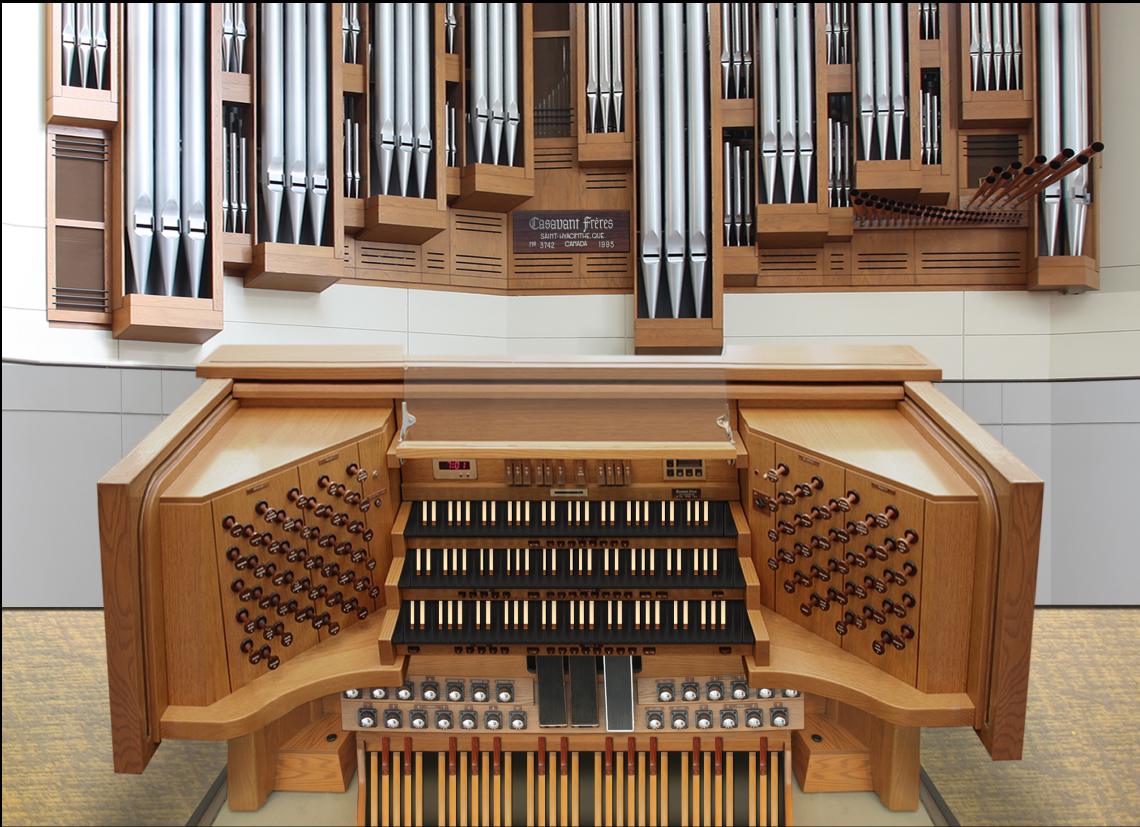

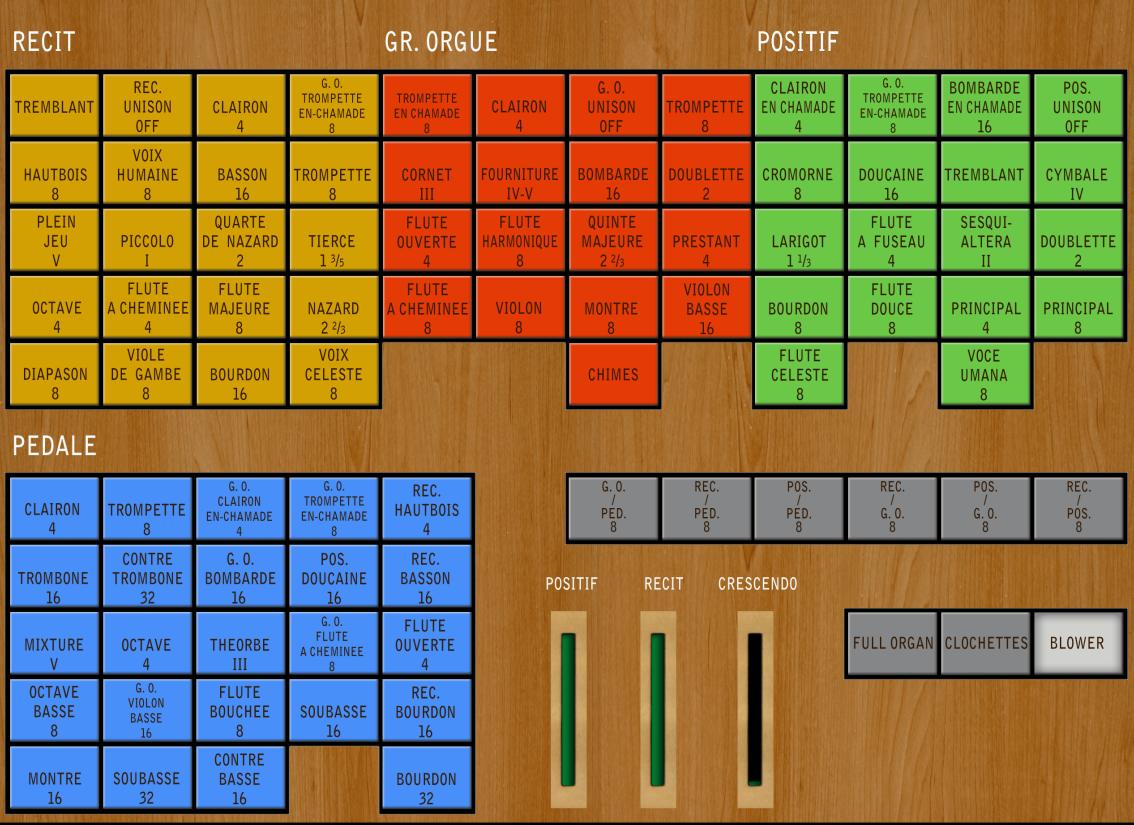

Requisitos
Requisitos
Consumo de RAM: surround de 4 canais
16-bit, outras configurações padrão: 15.1 GB
20-bit, outras configurações padrão: 25.6 GB (recomendado)
24-bit, outras configurações padrão: 28.4 GB
Consumo de RAM: 2-canais (apenas frontal)
16-bit, outras configurações padrão: 8.2 GB
20-bit, outras configurações padrão: 13.2 GB
24-bit, outras configurações padrão: 14.8 GB
Resolução de tela 1280x1024 px ou mais.
Polifonia de 5000 vozes recomendada para o surround completo (mínimo de 3500 tubos).
Polifonia de 2500 tubos simultâneos recomendada para uso do conjunto de amostras molhadas.
Este Conjunto de Amostras Hauptwerk é apresentado a você por Leonart Studio, um revendedor autorizado do fabricante Sonus Paradisi na Suíça (envios internacionais). Aproveite esta biblioteca de órgãos digitalmente amostrada para uso com o software Hauptwerk e comece a expandir sua coleção de órgãos históricos hoje.
Mais Conjuntos de Amostras Hauptwerk
-
Schwerin, Dom, Ladegast Organ 1871 [Hauptwerk]
Fornecedor:Sonus ParadisiPreço normal CHF 616.00Preço normalPreço unitário / por -
Segóvia, 1772 [Obra Principal]
Fornecedor:Sonus ParadisiPreço normal CHF 317.90Preço normalPreço unitário / por -
![Groningen, 1450-1740 [Obra Principal]](//artful.shop/cdn/shop/files/ss_Groningen1.jpg?v=1693275425&width=533) Em promoção
Em promoçãoGroningen, 1450-1740 [Obra Principal]
Fornecedor:Sonus ParadisiPreço normal A partir de CHF 658.90Preço normalPreço unitário / porCHF 1,681.90Preço de saldo A partir de CHF 658.90Em promoção -
St. Maximin, 1775 [Obra Principal]
Fornecedor:Sonus ParadisiPreço normal CHF 440.00Preço normalPreço unitário / por -
Reuter, 1928 [Obra Principal]
Fornecedor:Sonus ParadisiPreço normal CHF 473.00Preço normalPreço unitário / por -
Casavant, 1995 [Obra Principal]
Fornecedor:Sonus ParadisiPreço normal CHF 174.90Preço normalPreço unitário / por -
![Roterdão Hoofdorgel, 1973 [Hauptwerk]](//artful.shop/cdn/shop/files/ss_RotterdamMain1.jpg?v=1693279529&width=533) Em promoção
Em promoçãoRoterdão Hoofdorgel, 1973 [Hauptwerk]
Fornecedor:Sonus ParadisiPreço normal A partir de CHF 330.00Preço normalPreço unitário / porCHF 958.10Preço de saldo A partir de CHF 330.00Em promoção -
Piacenza, 1838 [Obra Principal]
Fornecedor:Sonus ParadisiPreço normal CHF 330.00Preço normalPreço unitário / por -
Bückeburg, 1997 [Obra Principal]
Fornecedor:Sonus ParadisiPreço normal A partir de CHF 1.10Preço normalPreço unitário / por -
Lüdingworth, 1683 [Obra Principal]
Fornecedor:Sonus ParadisiPreço normal CHF 330.00Preço normalPreço unitário / por

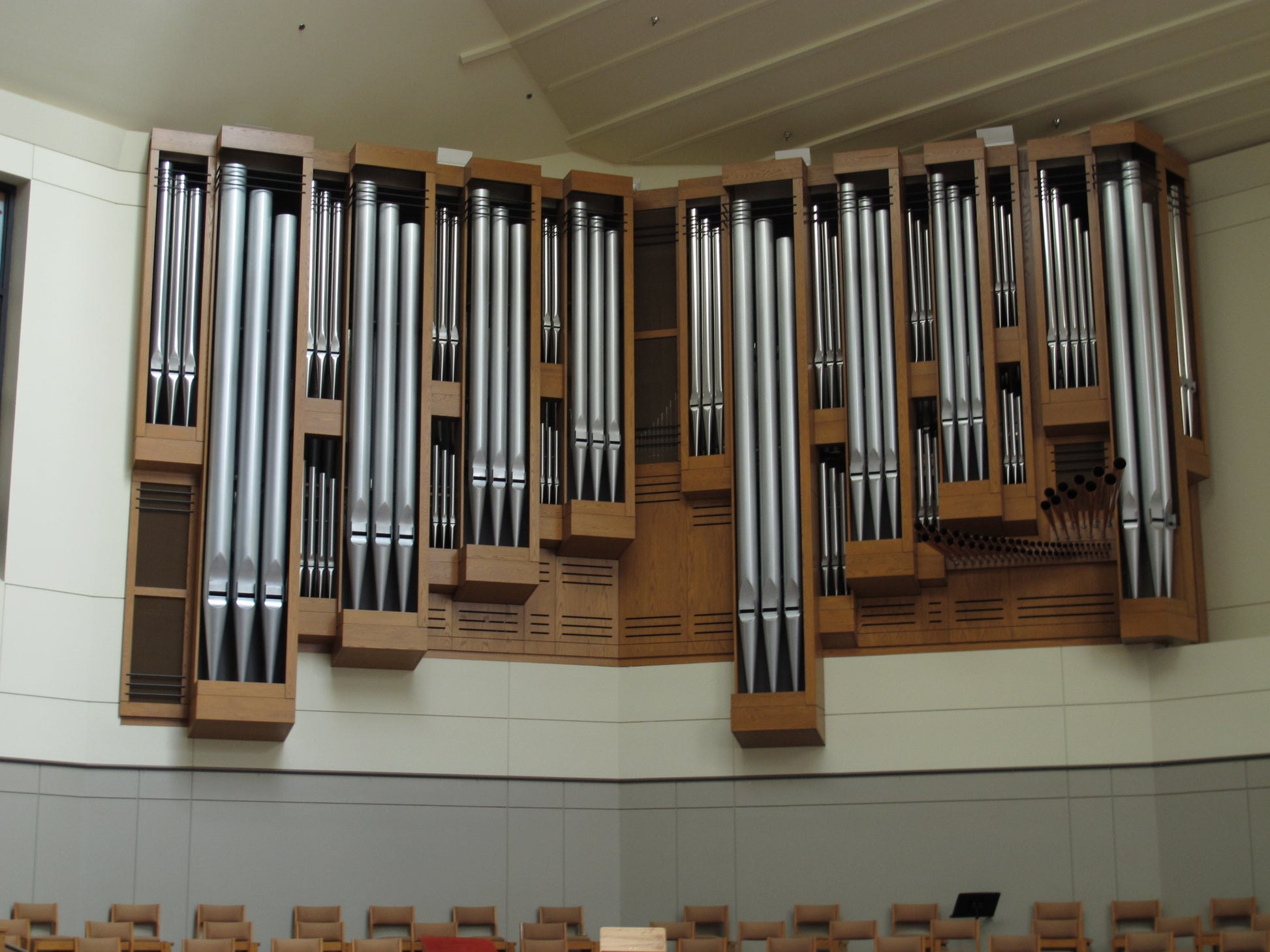
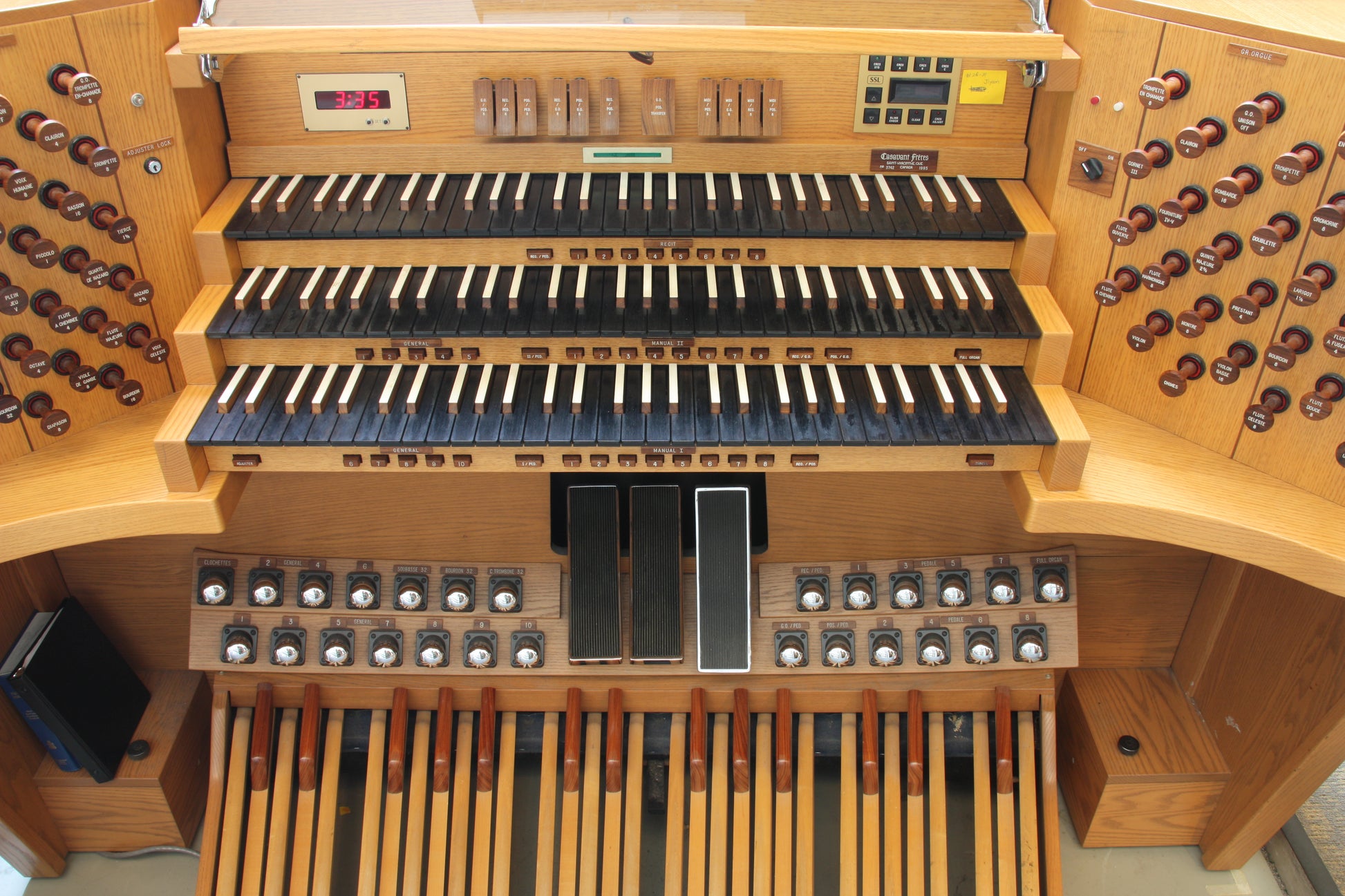
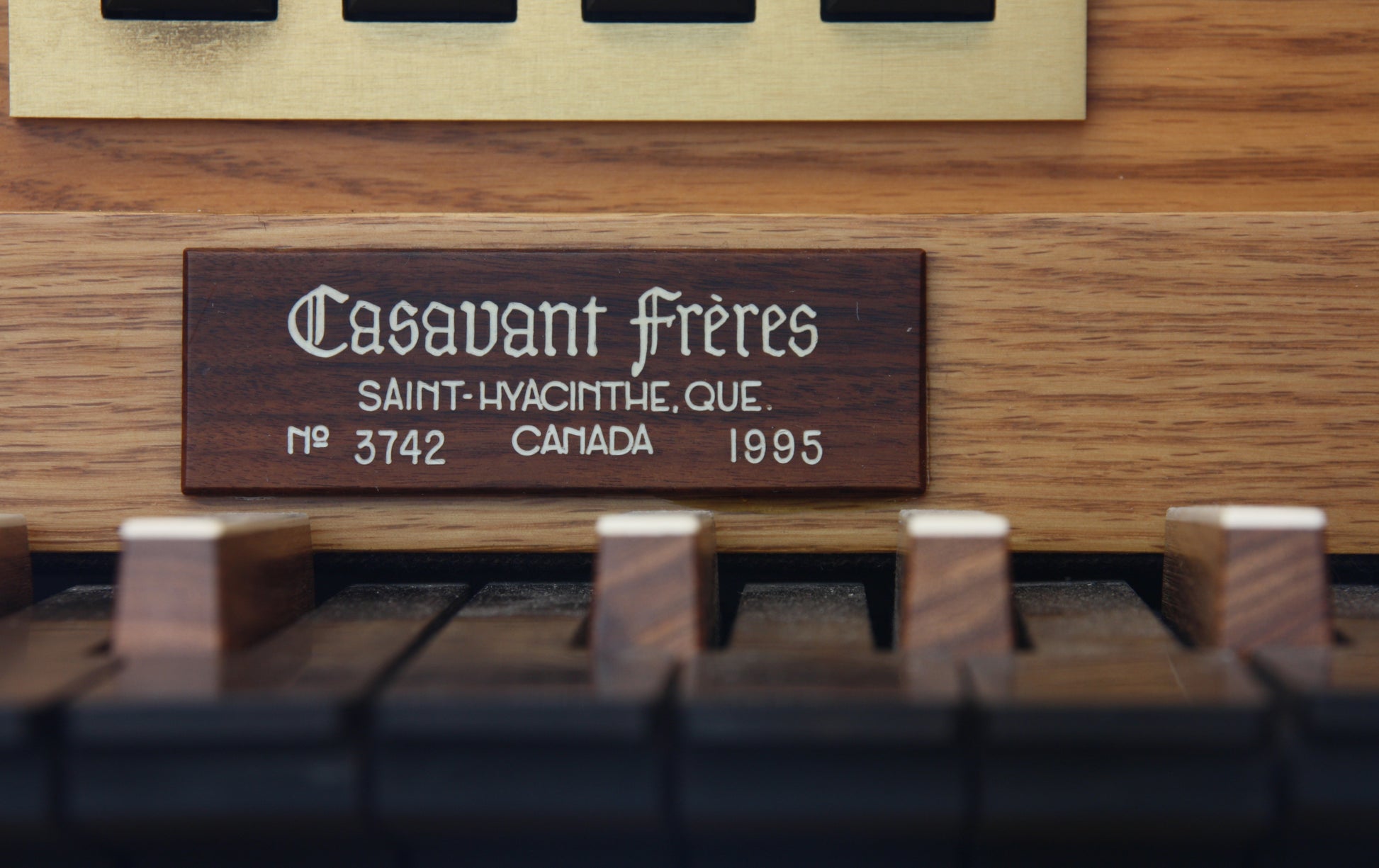
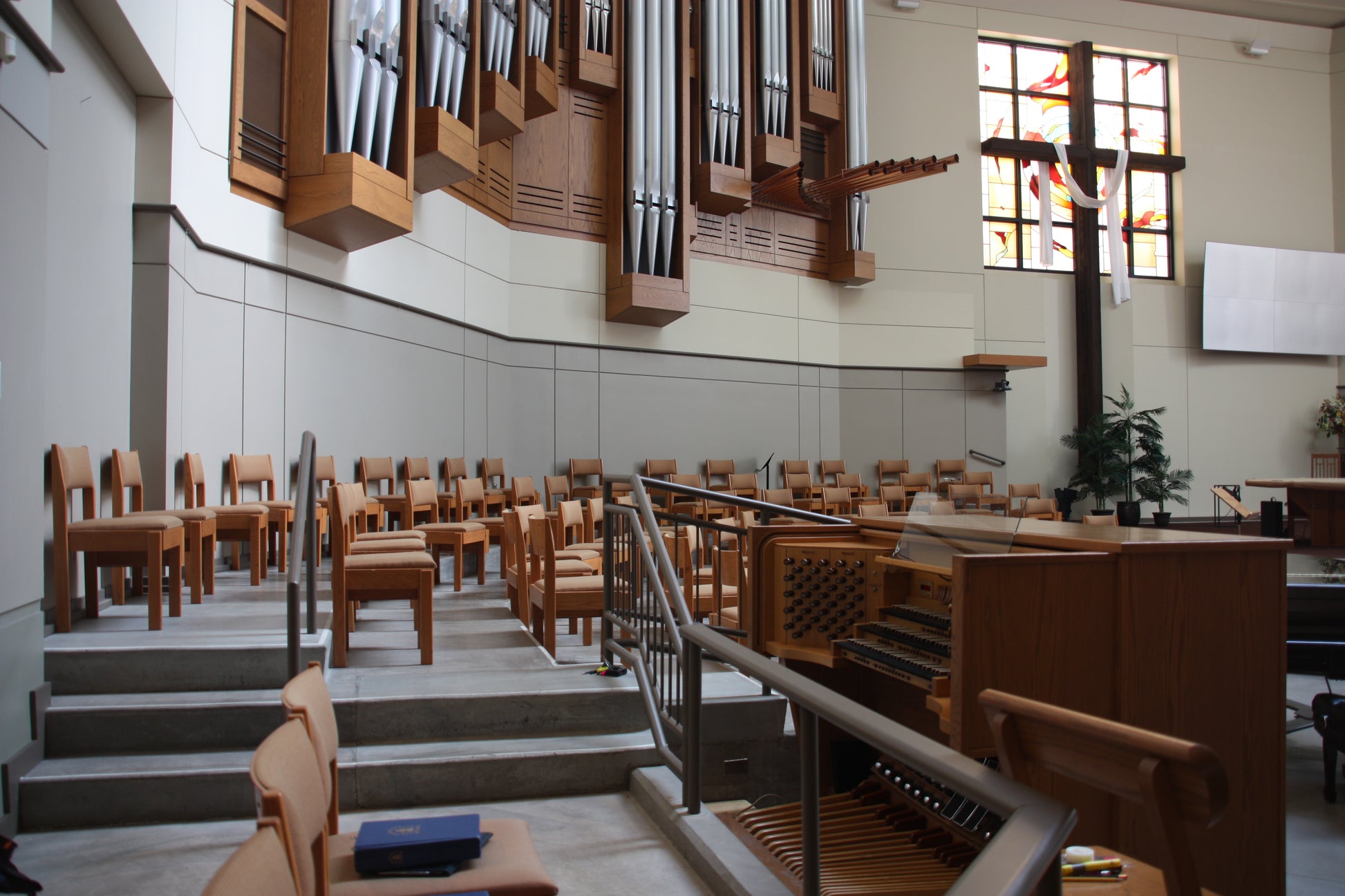
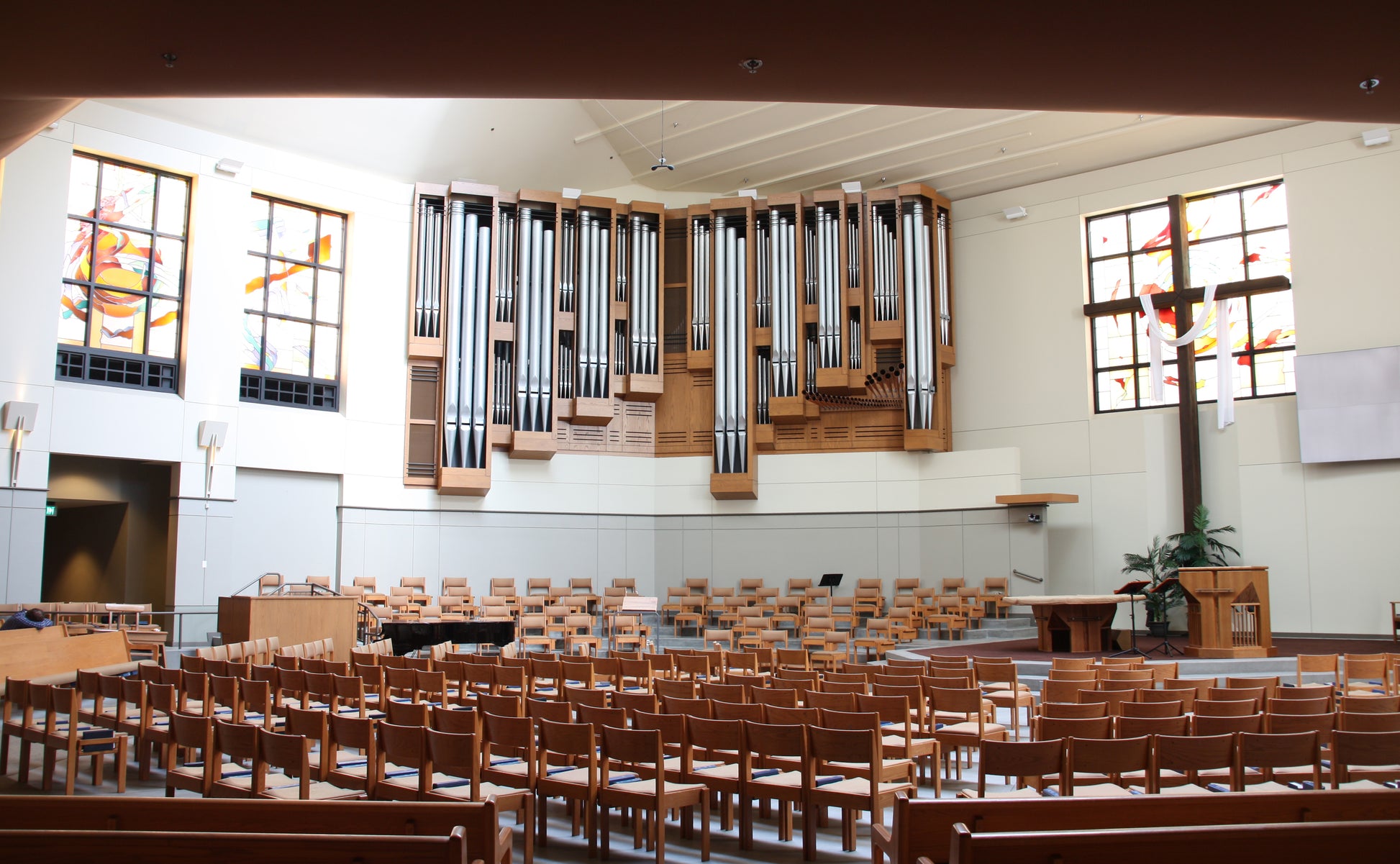
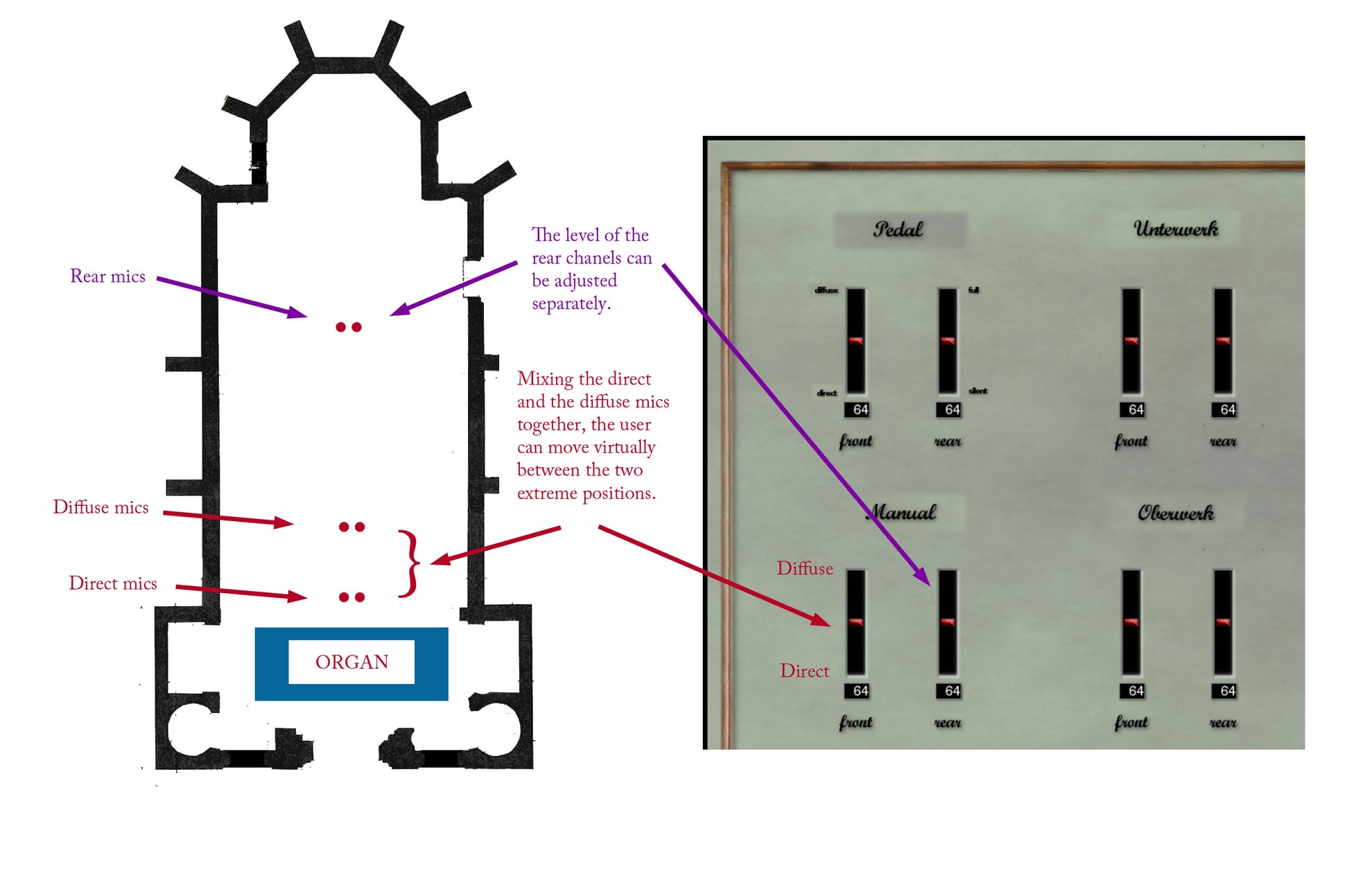
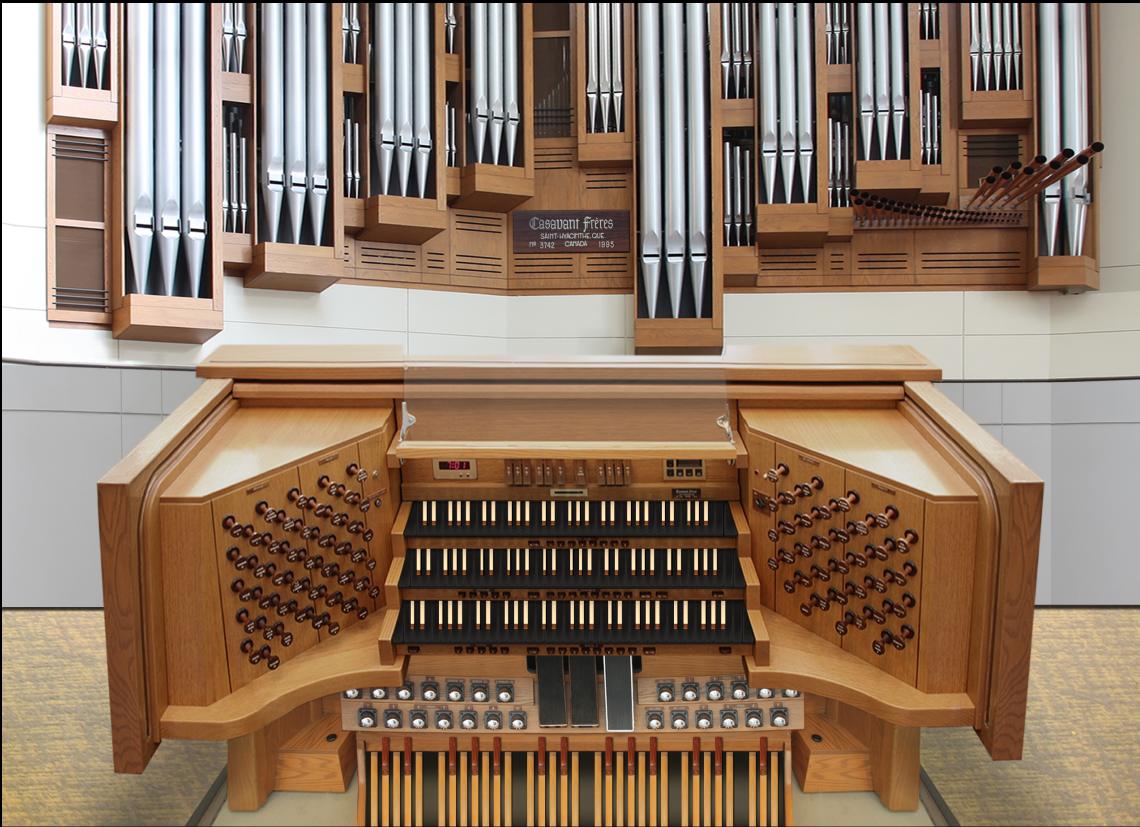
![Schwerin, Dom, Ladegast Organ 1871 [Hauptwerk]](http://artful.shop/cdn/shop/files/ladegast1.jpg?v=1759140126&width=533)
![Segóvia, 1772 [Obra Principal]](http://artful.shop/cdn/shop/files/ss_segovia1.jpg?v=1714213906&width=533)
![Groningen, 1450-1740 [Obra Principal]](http://artful.shop/cdn/shop/files/ss_Groningen1.jpg?v=1693275425&width=533)
![St. Maximin, 1775 [Obra Principal]](http://artful.shop/cdn/shop/files/ss_maximin1.jpg?v=1692902597&width=533)
![Reuter, 1928 [Obra Principal]](http://artful.shop/cdn/shop/files/ss_Reuter1.jpg?v=1693321024&width=533)
![Casavant, 1995 [Obra Principal]](http://artful.shop/cdn/shop/files/ss_casavant1.jpg?v=1693319885&width=533)
![Roterdão Hoofdorgel, 1973 [Hauptwerk]](http://artful.shop/cdn/shop/files/ss_RotterdamMain1.jpg?v=1693279529&width=533)
![Piacenza, 1838 [Obra Principal]](http://artful.shop/cdn/shop/files/ss_piacenza1.jpg?v=1693003521&width=533)
![Bückeburg, 1997 [Obra Principal]](http://artful.shop/cdn/shop/files/ss_bueckeburg1.jpg?v=1692967628&width=533)
![Lüdingworth, 1683 [Obra Principal]](http://artful.shop/cdn/shop/files/ss_luedingworth1.jpg?v=1692998051&width=533)